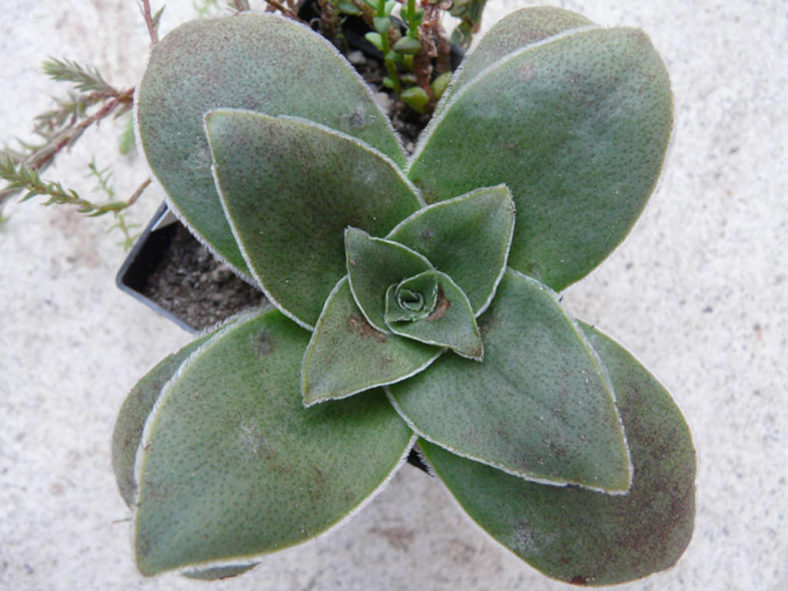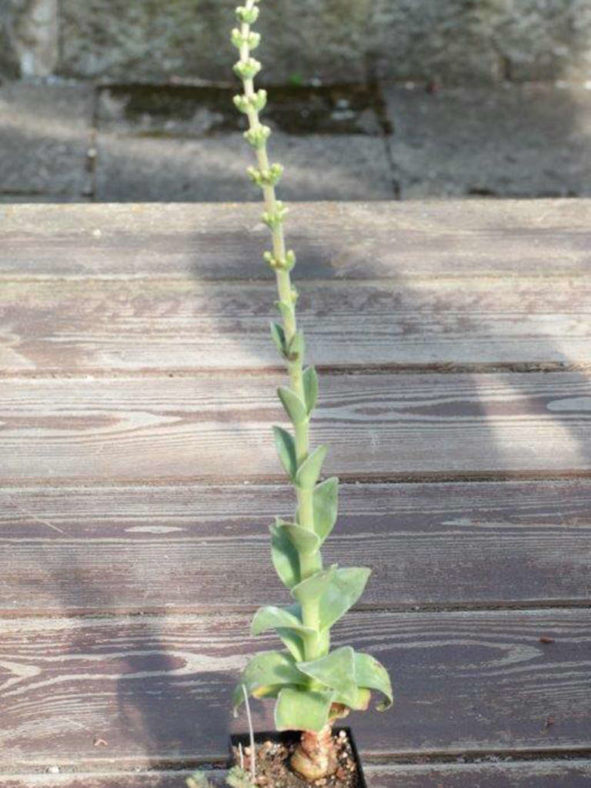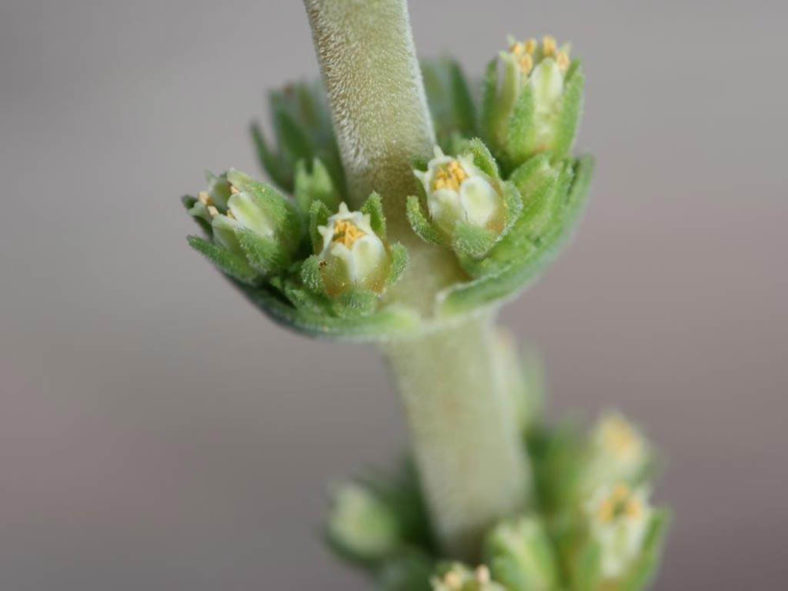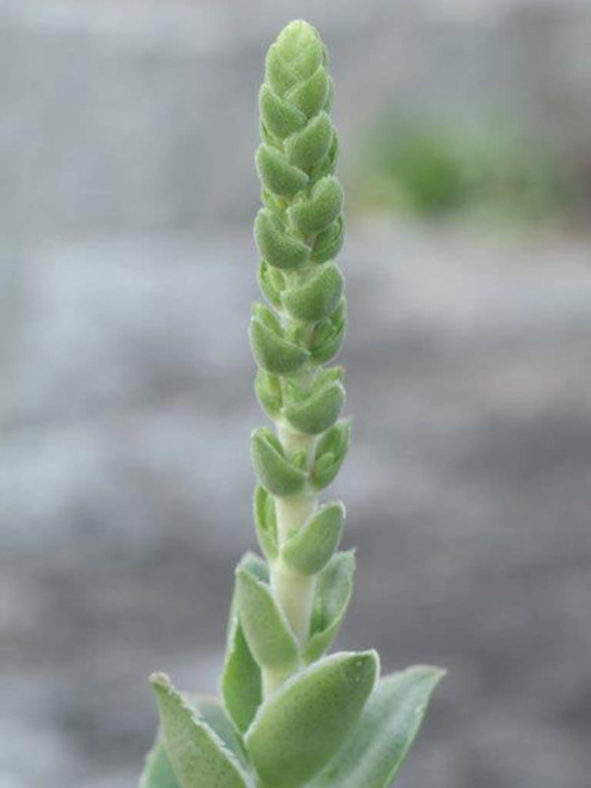Scientific Name
Crassula capitella subsp. sessilicymula (Mogg) Toelken
Synonym(s)
Crassula sessilicymula
Scientific Classification
Family: Crassulaceae
Subfamily: Crassuloideae
Genus: Crassula
Etymology
The subspecific epithet "sessilicymula (ses-ee-lee-SY-muh-luh)" means "sprouts attached to the base" and refers to the inflorescences that are usually branched from the base.
Origin
Crassula capitella subsp. sessilicymula is native to South Africa (Gauteng and Limpopo).
Description
Crassula capitella subsp. sessilicymula is a succulent plant with a woody base and rosettes of lance-shaped leaves. It can grow up to 16 inches (40 cm) tall. The leaves are finely papillate, tending to become glabrous, with ciliate margins and a pointed or not-pointed tip. They can measure up to 2 inches (5 cm) long and 0.8 inches (2 cm) wide.
The tiny white flowers appear arranged in a spike-like thyrse branched from the base from mid-summer to fall.

How to Grow and Care for Crassula capitella subsp. sessilicymula
Light: C. capitella subsp. sessilicymula prefers full sun to partial shade. However, intense afternoon sun in the hottest period of summer can burn the leaves of the plant. A place with morning sun and afternoon shade would be perfect. Indoors, place your plants in a window where they receive at least 6 hours of direct sunlight.
Soil: This plant is not particular about soil pH but requires very porous soil with excellent drainage. Use commercial potting soil mixes designated for use with succulents, or mix your own.
Hardiness: Like most Crassulas, this succulent will tolerate short-term freezing, but extremes of cold or heat will cause it to lose leaves and die. C. capitella subsp. sessilicymula can withstand temperatures as low as 25 to 50 °F (-3.9 to 10 °C), USDA hardiness zones 9b to 11b.
Watering: Avoid overwatering using the "soak and dry" method, where the soil is soaked with water, slowly drained, and left to dry out before watering again. Reduce watering in winter. Potted plants require more frequent watering than those in the ground.
Fertilizing: C. capitella subsp. sessilicymula does not need much feeding but will benefit from a small amount of organic fertilizer when it starts actively growing in mid-spring.
Repotting: Repot as needed, preferably in spring, at the beginning of the active growth period. Make sure the soil is dry before you begin repotting.
Propagation: This succulent is generally started by leaves or stem cuttings. It can also be grown from seeds and offsets. The easiest way is to propagate C. capitella subsp. sessilicymula from a single leaf, while using stem cuttings is the fastest way to get a decent-sized plant. These processes are most successful at the beginning of the active growth period. Sow the seeds in the spring or summer. Propagating by dividing offsets is easy because the parent plant has already done most of the work for you.
Learn more at How to Grow and Care for Crassula.
Toxicity of Crassula capitella subsp. sessilicymula
C. capitella subsp. sessilicymula is nontoxic to people and pets.
Links
- Back to genus Crassula
- Succupedia: Browse succulents by Scientific Name, Common Name, Genus, Family, USDA Hardiness Zone, Origin, or cacti by Genus
Photo Gallery
Click on a photo to see a larger version.


